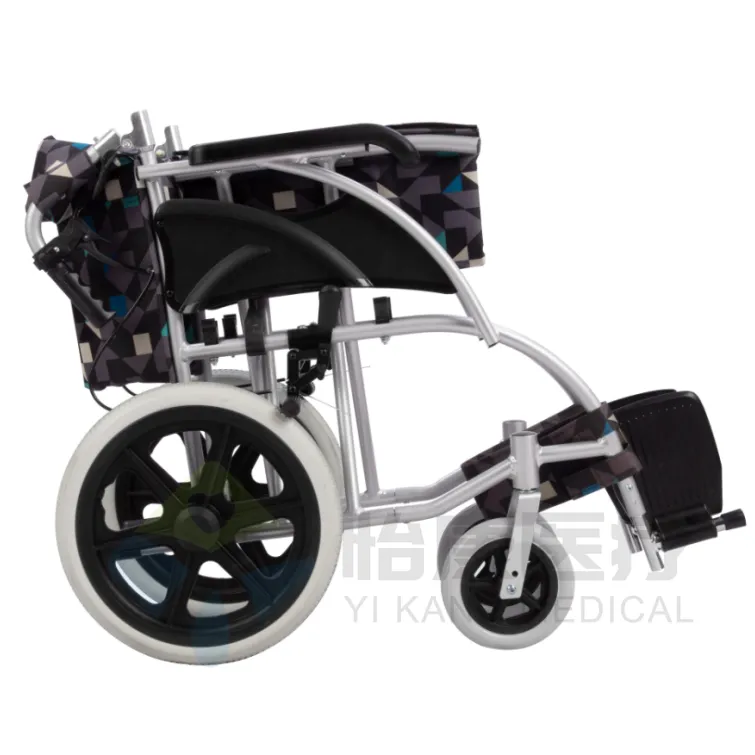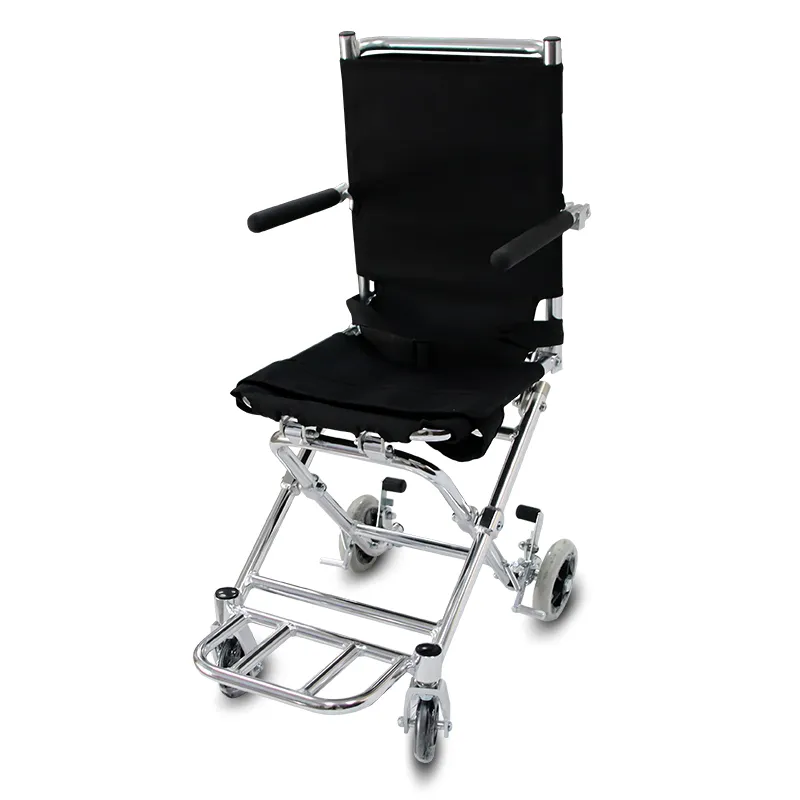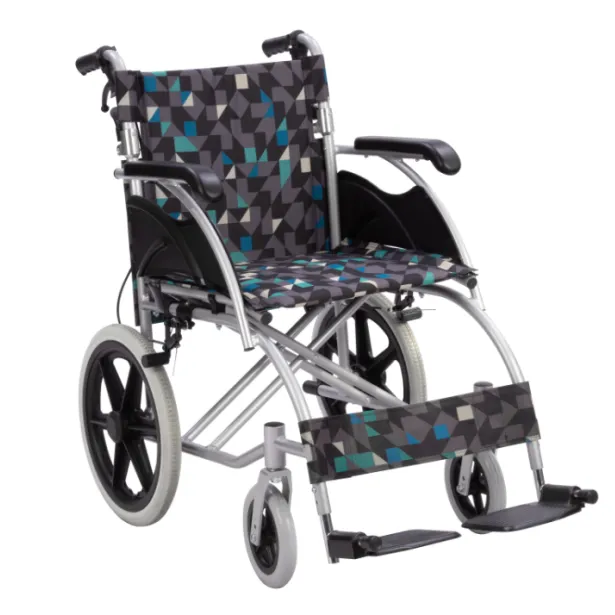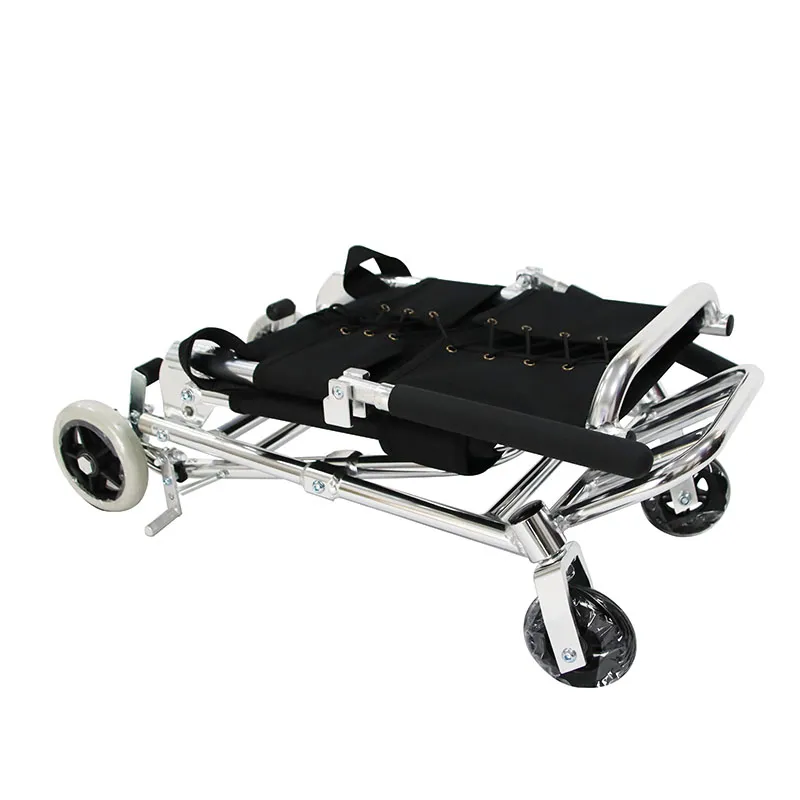As an important tool to improve the quality of life of people with limited mobility, wheelchairs play an irreplaceable role. With the diversification of usage scenarios and population needs, the types of wheelchairs are becoming more and more abundant. Among them, manual wheelchairs and transport wheelchairs are the two most common types of non-electric wheelchairs, and there are significant differences between the two in terms of structural design, applicable population, functional use, etc.
This article will conduct a systematic and professional in-depth analysis around the question "What is the difference between a manual wheelchair and a transport wheelchair?" to help readers clearly understand the definitions, structural differences, usage scenarios, control methods and applicable objects of the two, and truly make scientific choices based on actual needs.

Manual wheelchair vs. transport wheelchair: What is it?
What is a manual wheelchair?
A manual wheelchair refers to a wheelchair that is completely driven by human operation. Its core design concept is to meet the needs of users for autonomous operation. Manual wheelchairs are usually equipped with large-size rear wheels, and users can push the wheelchair forward, backward, turn, etc. through the wheel rims, thereby achieving relatively autonomous mobility.
What is a transport wheelchair?
A transport wheelchair, also known as a transition wheelchair or a companion wheelchair, is designed with the focus on convenient transportation. The biggest feature of a transport wheelchair is that all four of its wheels are small-sized tires, which the user cannot operate by himself and must rely on a caregiver or companion to push and use. It is mainly used for short-distance movement, entering and exiting medical facilities, or getting on and off the vehicle.
Manual wheelchairs and transport wheelchairs: structural differences
1. Tire size and distribution
The most notable feature of a manual wheelchair is that it is equipped with large wheels on both sides (about 22-24 inches in diameter). This structure allows the user to hold the wheel rim and push the wheelchair independently. The front wheel is usually a small wheel for guiding the direction. The combined structure of the four wheels of the whole vehicle is more suitable for a variety of terrains and has a certain ground adaptability.
In contrast, a transport wheelchair uses four small wheels of equal size (generally 8-12 inches in diameter), which cannot support the user to push independently. Although this structure is not conducive to the user's independent movement, the vehicle is lighter and more foldable as a whole, and is particularly suitable for short-distance indoor movement or transportation between vehicles.
2. Control method
The control of a manual wheelchair lies with the user himself, relying on the rims on the rear wheels for physical drive and steering. Therefore, there are certain requirements for the user's upper limb strength, coordination and physical fitness.
The transport wheelchair is completely dependent on external personnel to push and control. The user cannot perform any form of autonomous movement, so there is no manual drive system. This type of wheelchair is more suitable for patients who cannot move autonomously or are unconscious.
3. Vehicle weight and foldability
Generally speaking, manual wheelchairs are relatively heavy due to their complex structure and higher requirements for vehicle stability, usually between 12 kg and 18 kg. Although most models support folding, the storage volume is still slightly larger than the transport wheelchair.
The transport wheelchair is simple and light in design, compact in structure, and generally weighs between 8 kg and 12 kg. It is easy to carry and fold quickly, especially suitable for patients or caregivers who go out frequently.

Manual wheelchairs and transport wheelchairs: different usage scenarios
Applicable scenarios for manual wheelchairs
· Long-term users, such as people with limb disabilities, spinal cord injury patients, etc.;
· Elderly people with certain upper limb strength and motor ability;
· People who need to move autonomously in multiple scenarios such as home, hospital, and street;
· Users with certain rehabilitation training capabilities.
Manual wheelchairs are suitable for more complex daily living environments because of their certain terrain adaptability and user control autonomy, and can even be used outdoors on uneven ground to a certain extent.
Applicable scenarios for transport wheelchairs
· Short-distance transfer of hospitalized patients within the hospital;
· Temporary use by people with postoperative physical weakness in hospitals, airports, stations and other places;
· Severely ill patients with no upper limb strength or unconsciousness;
· Used by the elderly when going out for medical treatment.
Transport wheelchairs are more like a "mobile tool" rather than a "life partner". Their role focuses on "carrying" rather than "transportation", and are suitable for temporary short-distance use scenarios.
Manual wheelchairs and transport wheelchairs: different applicable groups
Who are manual wheelchairs suitable for?
The core users of manual wheelchairs are people with certain autonomous mobility but limited lower limb mobility. These users usually have good cognitive ability and upper limb strength, can complete hand-pushing operations, and hope to complete basic life mobility without relying on others.
Such users often focus on life independence and personal space, so the autonomy of manual wheelchairs becomes their first choice.
Who are transport wheelchairs suitable for?
Transport wheelchairs are mainly designed for patients who have lost their ability to move independently or need to be cared for by others in the short term. Such users often have very weak mobility or even unconsciousness, and are unable to operate the wheelchair by themselves.
Such people are completely dependent on caregivers to push them, and the lightness and ease of operation of transport wheelchairs are their greatest advantages.
Manual wheelchairs and transport wheelchairs: Differences in care and use experience
Challenges of care for manual wheelchairs
Due to their complex structure, the daily maintenance of manual wheelchairs is relatively cumbersome, including:
·Regularly check the air pressure of the large tires;
·Wear inspection of the wheel rims;
·Lubrication and looseness inspection of the folding parts;
·Calibration of the sensitivity of the brake system, etc.
In addition, some manual wheelchairs are equipped with additional structures such as trunk support, footrests, and headrests, which increase the cost of care and maintenance, but also significantly improve the comfort and stability of patients.
Ease of care for transport wheelchairs
The structural design of the transport wheelchair determines that its maintenance workload is extremely low. Airless tires, no rotating wheel rims, and no drive device mean that caregivers only need to pay attention to:
·Whether the screws are loose;
·Whether the pedals are stable;
·Whether the brakes are normal.
Therefore, transport wheelchairs are more suitable for public medical places that need to be quickly deployed, temporarily used, or used by multiple patients in rotation.

Manual wheelchairs and transport wheelchairs: functional comparison
| Functional dimensions | Manual wheelchair | Transport wheelchair |
| User autonomy | High: can control direction and speed | Low: Needs to be pushed by others |
| Comfort | High: can be configured with seat cushion, backrest, headrest | Medium: Generally basic configuration |
| Structural weight | Relatively heavy | Relatively light |
| Duration of use | Suitable for long-term use | Mostly used for short-term or temporary use |
| Portability and foldability | Foldable, but takes up more space | Can be folded quickly for easy transportation |
| Ability to adapt to terrain | Strong, can be used outdoors | Weak, suitable only for flat ground |
| Degree of care dependency | Low | High |
Manual wheelchairs and transport wheelchairs: price and acquisition method differences
In the market, the price range of manual wheelchairs is wider, ranging from basic models within a thousand yuan to high-end professional rehabilitation models of thousands of yuan. The more functions, the more complex the structure, and the higher the price.
The price of transport wheelchairs is generally low, usually between a few hundred yuan and a thousand yuan. Due to the streamlined functions, its cost is easier to control, and bulk purchases have become a common choice for medical institutions.
How to choose a manual wheelchair and a transport wheelchair?
Through the above systematic analysis of all aspects, it can be made clear that there are fundamental differences between manual wheelchairs and transport wheelchairs in design logic, functional goals, applicable populations, and usage scenarios. In short:
· If the user pursues autonomy and long-term use experience, it is recommended to choose a manual wheelchair;
· If the user is in a state of short-term care and cannot take care of himself, a transport wheelchair is a better solution.
The key to scientifically distinguishing the two is not only to understand the literal difference, but also to match them in combination with multi-dimensional factors such as the user's physical condition, life needs, and use environment. Only in this way can the wheelchair, as an assistive device, truly play its medical value of improving the quality of life and enhancing freedom of movement.

Why Choose "Yikang Medical" as Your Medical Equipment Supplier?
If you're looking for a reliable hospital furniture manufacturer in China, Yikang Medical is your best choice. Since 2010, our company has evolved from producing hardware accessories to becoming a trusted OEM factory for well-known brands. Our high quality hospital beds, wheelchairs, commode chairs, and rehabilitation aids are available at competitive wholesale prices. As a certified manufacturer (ISO13485, CE, FDA), we ensure international standards in all our products. Contact us for quotes and enjoy factory-direct prices with custom options for your medical facility.

